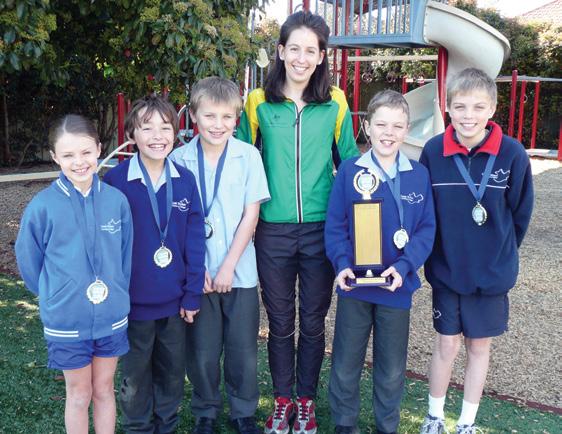
11 minute read
SPACE RACING
Peter Creely (Bendigo Orienteers, VIC)
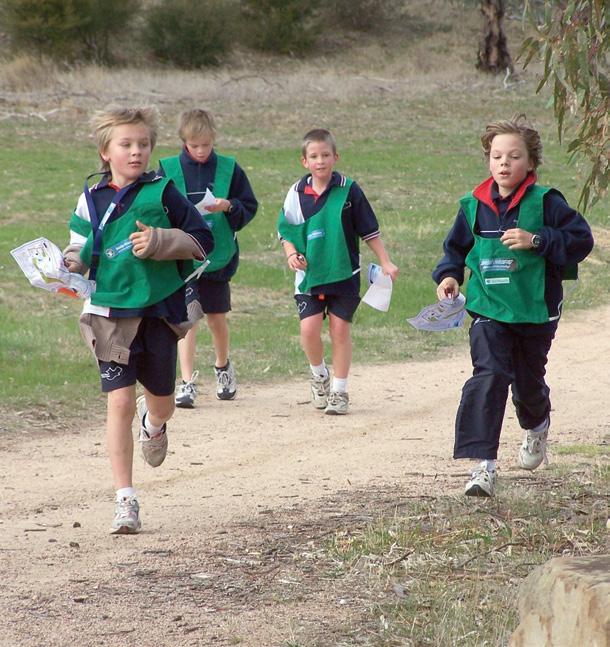
IT is a cool morning in early September, a cold wind, a hint of rain. The last race in the second Series of SpaceRacing for 2009 has just finished. The sausages are on the barbie, spreading a ‘come and eat me’ smell throughout Beischer Park, Bendigo. The presentation of the winner’s trophy and the medals and certificates for all competitors is about to begin. I watch as 30 or so kids mill around, skylarking, some comparing runs and times, some chasing each other – most casting surreptitious glances at the BBQ in the hope of scoring the first hot sausage. The last competitive SpaceRace for 2009 has been decided. Bendigo Orienteers Inc. was formed in 1977. It has a consistent membership list of around 65 units – families and couples - and since 1990 has run a calendar of 30 to 35 Bush Orienteering events each season. Our main advantage, and the reason we are able to offer such an event list, is that Bendigo, as a provincial city, is unique in its situation in the land, and its position within the sport of Orienteering. The city has a population of approximately 100,000 people. It has many primary and secondary schools, both state and private, and a large campus of Latrobe University. More importantly, it is almost completely surrounded by forest – we have at least 12 Bush Orienteering maps within 10 minutes drive of the CBD. SpaceRacing? The name came about from a perceived need to upgrade the image of Orienteering in schools. When talking to primary school children and teachers, the impression gained was that of a sport that was performed in the school yard. The kids enjoyed doing it but they saw it as part of the school curriculum, another sort of lesson, but outside the schoolroom, in the yard! Maybe it was time to step outside the yard and develop something with a different image. The availability of SportIdent gave us the opportunity of linking Orienteering to the technology of the 21st century, and to give it a name, an image that resonated with that technology. The name wasn’t immediately accepted by all members, but it will gradually become part of accepted Orienteering vocabulary in Bendigo. SpaceRacing was born in Bendigo out of a desire to provide a suitable Orienteering format that would appeal to primary school children – away from the schoolyard. Jim Russell, a long time member of Bendigo Orienteers and a Level 3 Coach, was visiting schools
L-R Nicholas Vercoe, Lachlan Cherry, Colin Walker (President BO), Jim Russell (Coach), Brooklyn Cullen & Glenn James,
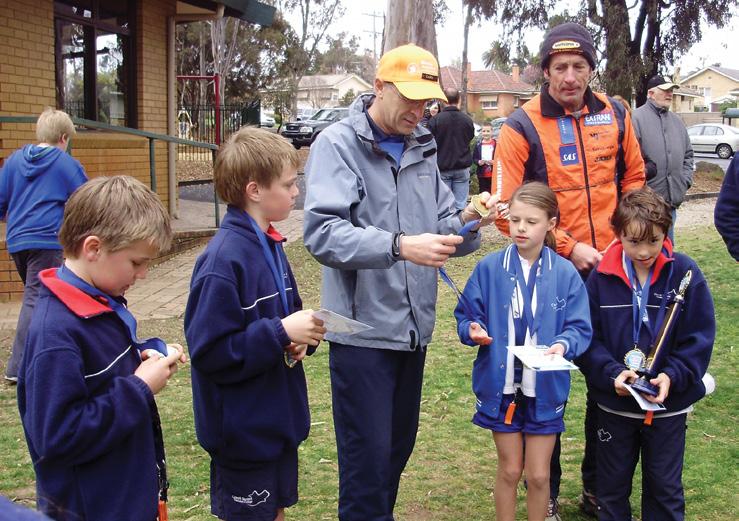
Registration

Ready

Through tunnels
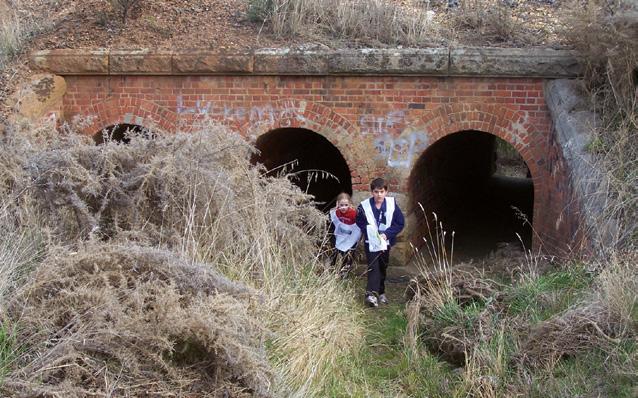
In the wilds
and teaching Orienteering, working on a VicHealth ‘Linking Communities’ grant. However, it seemed that once he was finished at the school there was nowhere for those kids who wanted to, to take it further, unless one of the teachers carried it on – which few did! The question: how to provide a bridge from Jim’s work in the schools, across the attractions of other sports to competitive Bush Orienteering? Whatever we did must be attractive to the kids (and their parents). It needed locations that didn’t involve too much travelling to reach, and that were safe and secure for primary school children. It needed to reflect modern technology. It needed to be short and snappy. Many of the parks and gardens around Bendigo had been mapped in the past and some used for our annual Primary Schools Championships; the club has just purchased its first SportIdent School set – the top in Orienteering technology; a short score event format was available that would be ideal for what we wanted. Thus SpaceRacing came into being. It is exciting, it is fast, it is visual – and the kids seem to love it! In essence it is a 30 minute score event set on one of several park maps close to the city. We held our firstever Series in the latter part of 2008 and attracted three schools fielding four teams (approximately 20 children). Now, in 2009 in two Series of seven events each, that figure has risen to five schools with 7 teams – averaging around thirty kids at each event. A school team comprises four students, and a school may enter as many teams as there are kids wanting to run. We have set up a Space Rangers team for those who arrive at the event, are in excess of a school’s requirements on the day, and want to compete. We do not turn anyone away. Each new competitor pays a once-off annual fee of $5.00 to become a student member of Bendigo Orienteers, and a $2.00 entry fee for each race. On registration they are given a shoulder bag, water bottle and a whistle with lanyard, all with the SpaceRacing logo prominently displayed. Competitors must run in pairs (two pairs for each school team) and must stay together for the whole race. Assembly on the Saturday is at 9.30am, map handout at 10.00, and the formal mass start at 10.30. The winning school in a Series receives a cheque for $100 and an engraved medallion for each team member. A Certificate of Competence in SpaceRacing is presented to every student who has taken part in the Series. An important element in the success of SpaceRacing is to have individual and team results displayed immediately after completion. To achieve this, electronic timing is used and makes the task much easier and quicker. The new SportIdent “Schools Training Set” was purchased and includes all the necessary equipment, without the need of a computer. The set includes control stations, start, finish and clear boxes, SI sticks, a download station and results printer. Control boxes are secured inside lockable plates (called Space Stations) and are chained to fixed objects to prevent theft. SI sticks (called Space Keys) are initialized with team names. Students select a stick from their team box and write the stick number and their name on a results tab. On completion, the students download and print out their results. The results slips indicate their time and the number of controls visited. The students then calculate their own points, 10 per control less 10 per minute late, and 10 bonus points for the first pair back with all controls. They write both the score and time on the results stub and place onto a magnetic display board. The students or team organiser
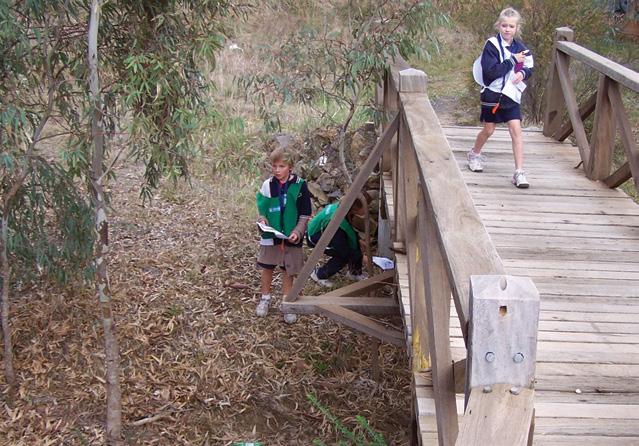
also record their score on their team sheet and the total can be quickly added. Within a few minutes of completion, all of the team scores are displayed together with each team’s progressive scores. All of the results are provisional until they are downloaded to a computer afterwards and checked. The courses are set with a view to the competitors’ developing skills. The challenge level is kept high but always achievable. SpaceRacing is not treated as a game, it is always a contest that is taken very seriously by almost all the kids, and course setters must treat it in the same way. Competitors are encouraged to get together with their partner(s) after map handout and plan where they will be running, what controls will be attempted, in what order, and to plan their run so that they return on time without loss of points. Communication is most important! We send out three periodical colour newsletters during each Series to keep all competitors, and their parents up to date with what’s happening on the SpaceRacing scene, and to promote other activities within the sport. As well, during the school year we send out a fortnightly e-mail bulletin with SpaceRacing news and details of the next two local Bush Orienteering events. Now, that is basically how we adults organise and run a SpaceRacing event, and we think it’s great. But what do the kids think about it? After all, they are the ones we are trying to coax into our sport! One of our parents, who is also a teacher at Creek Street Christian College (the Series winner this year) conducted a survey of the SpaceRacers from her college. She asked them what they liked, and what they didn’t like about SpaceRacing. Plusses included: Improving my long distance running skills, teamwork, using our heads when struggling with controls, persevering; New maps, collecting the controls at the end of the day; Going with my friends; Electronic finger key, maps; Electronic orienteering, it kept you fit and was fun and enjoyable. And of course, the minuses: It was too easy; My legs weren’t used to running so much; I got scared a lot from the sticks and bushes, almost lost; Disagreeable and slow partners. She also asked them what they found interesting, or enjoyed most. The answers to these questions may give us an insight into what we should be trying to offer to young people, whether it is through SpaceRacing or any other form of educational Orienteering. Lots of fast runners, scores, maps; Getting to be friendly, lots of teamwork, fifteen controls WOW! I like to run, love to stay fit, lots of different controls, learnt how to concentrate; All the lakes weren’t all dried up; Having fun and seeing friends and having a BBQ and exercise; The hard controls to find; Nervous people; Buzzing the beeper and rushing to find the next control. And …The teamwork was the best, putting our heads together; Studying the map and finding new things; Racing other people to the finish; Going to areas I have never been to; The afterthought of doing your best and running as fast as you have ever run before; Having the GPS on us and afterwards seeing how we went and how fast we ran;
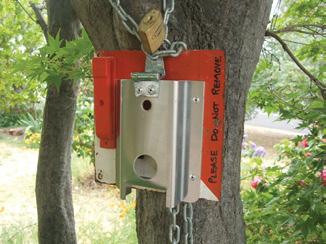
Concentration
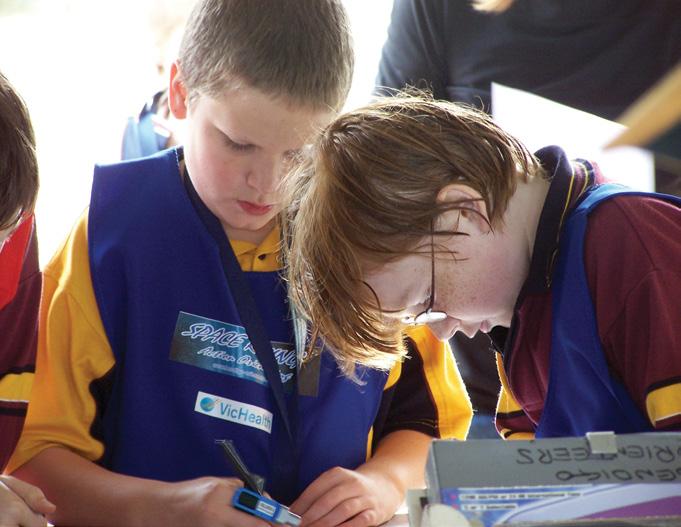
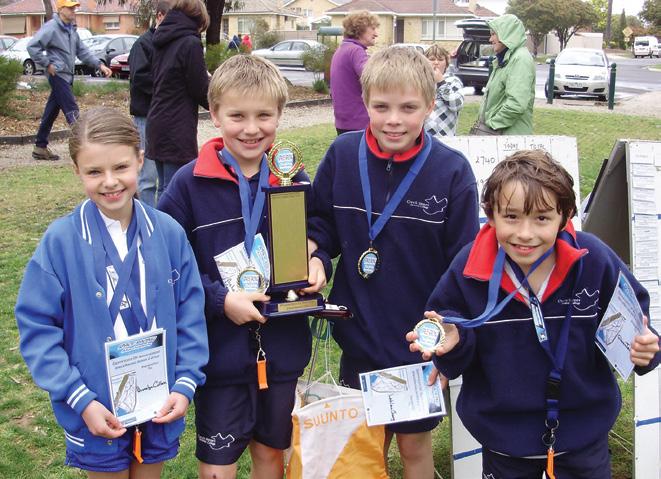
The Kids Rule day: that was where your parents are your partners, but my 4-y-o brother was my partner and my dad just tagged along; Going through tunnels and parks, it was fun running to the finish; Space Keys, stations, maps; Running around the course, punching stations; I learnt how to read maps and signs; Getting out in the bush early in the morning and finding out about friends, compasses and maps. Obviously they like the format. It is exciting and very rewarding working with children in a sport they obviously enjoy, and from which they get a great deal of satisfaction. Some of them almost demand to help after the event by collecting the Space Stations. We encourage this, but sometimes it rebounds: our course setter for the day had to leave early after one of our events, so a few of us picked up Stations for him. One Station was reported missing – No. 31 (most upsetting, we’ve not lost one yet – touch wood!). A couple of us went out to check – it was only about 50 metres away from the assembly area, but we could find no sign. By chance we asked one of the kids if he had visited No. 31 during the race. “Yes.” “Was it in the right place?” “Yes.” “Well we can’t find it.” “No wonder, I’ve picked it up – there it is on the table!” Who is teaching whom? Where to after SpaceRacing? The most difficult part of any project is starting. SpaceRacing is the start of campaign to draw more young people into Orienteering. As part of our second Series we organised a Bush-O training morning on one of our bush maps – about twenty SpaceRacers came along. They were given lessons on reading a compass and were then taken around a typical Bush Orienteering course. From the feedback we got it seems they all enjoyed the morning. Since then some of these kids have completed simple bush courses under the supervision of an experienced orienteer. The pathway is taking shape, it will take time and perseverance – one of the kids mentioned it above! The sausages have all gone, as have the kids -- and Mums and Dads. We finished the presentations just before a fine misty drizzle set in, and we have almost finished packing up the SI equipment and cleaning down the barbie. The competitive part of SpaceRacing is done for 2009. Now we must look to next year. We will continue to develop SpaceRacing in Bendigo. In time it will become a permanent link, a stepping stone into Bush Orienteering, and for those kids who show the enthusiasm and interest, it will be a pathway that will take them further into our sport – further up into the Stars, as it were. The plan is to present an update in next year’s The Australian Orienteer. What will we call it? – SpaceTrack, taking Orienteering to the Stars? Look out for it!
